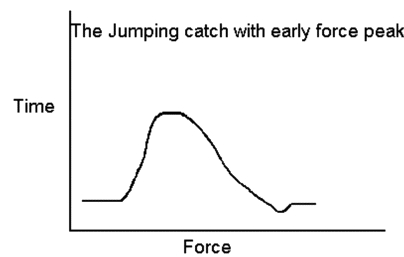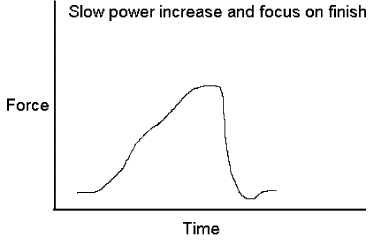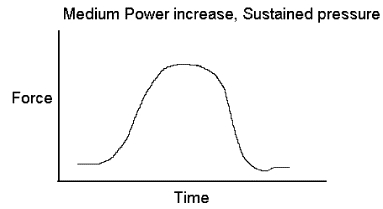
1. The Hard Catch (Figure 3)

Figure 3 (Seiler)
2. The Hard Finish (Figure 4)

Figure 4 (Seiler)
3. The Fat Middle (Figure 5)

Figure 5 (Seiler)
The best method would be one that would give you the greatest area under the force time curve. However, as mentioned before there is a direct correlation with physiology in determining the total impulse of a stroke. When the crew is in a short 2000 m race the “fat middle” appears to the be most efficient stroke shape. In order to produce the hard catch stroke, the curve is very steep with is very energetically costly. For the impulse created, the rower accumulates lactic acid quickly than if the force were distributed over a longer time period (aka the “fat middle”). The hard catch would only be effective for a few strokes, a 500 m sprint at the most (Seiler).
The hard finish puts the most strain on the back and shoulders (smaller muscles than the legs) so the quantity of muscle mass producing the force is reduced from the hard catch method. Again lactic acid build up is increased and in combination with the smaller muscle quantity the hard finish is even less efficient than the hard catch.
The “fat middle” still incorporates the importance of early leg drive and follow through to the end of the stroke. Peak force during the stroke is slightly less than the hard catch but the “fat middle” minimizes lactic acid production and encorporates the greatest muscle mass evenly over the course of the drive (Seiler).